An In-Depth Examination of Cooper Flagg's Greatness
Duke's Cooper Flagg is a lock to be the number one pick in the 2025 NBA Draft for the Dallas Mavericks. Maxwell is here with an in-depth examination of his greatness, via both tape and statistics.
There’s no reason to get cute with it. Duke’s Cooper Flagg is a surefire lock to be the number one pick on draft night. The 18-year-old measured in at 6’7.75” with a 7’0” wingspan and an 8’10.5” standing reach while tipping the scales at 221 pounds at the NBA Combine. He has quintessential measurements for a modern forward, with the quintessential skills and production to back it up. If you’ve paid any attention to the NBA Draft, you know that Cooper Flagg is a great prospect. Today, we’ll dive into how great he is and where he can get better. To do this, we’ll be looking into his tape, as well as how his production stacks up to a handful of recent high-level NBA players during their pre-draft seasons.
Big Picture
One of the easiest, quickest ways to get a feel for a player’s on-court production is via the Box Plus-Minus (BPM) all-in-one metric. For a quick breakdown of how it works, here’s an explanation from the creator of BPM itself, Daniel Myers, which is available on Basketball Reference.
Box Plus/Minus, Version 2.0 (BPM) is a basketball box score-based metric that estimates a basketball player’s contribution to the team when that player is on the court. It is based only on the information in the traditional basketball box score--no play-by-play data or non-traditional box score data (like dunks or deflections) are included.
BPM uses a player’s box score information, position, and the team’s overall performance to estimate the player’s contribution in points above league average per 100 possessions played. BPM does not take into account playing time -- it is purely a rate stat!
Basically, it’s a great metric to determine if a player is doing productive things on the basketball court. It’s useful when it comes to spreadsheet scouting, as college BPM is strongly correlated with NBA success, particularly for young players. As players get older, their experience and physical advantages typically allow them to be more productive, so I tend to value sky-high BPMs from older players less. But if you look back at the top freshman BPM performers over time, especially ones with an NBA playstyle and the requisite NBA physical traits, you’ll overwhelmingly find more hits than misses.
Per BartTorvik, which tracks data going back to 2008, Cooper Flagg had the 10th-best BPM season in that time. Again, keep in mind what I said about older players having an easier time producing and the value of posting a high BPM at a young age. Cooper Flagg registered the third-best freshman BPM since 2008, trailing only Zion Williamson and Anthony Davis. This is all the more impressive when you consider that Flagg was only 17 years old at the start of the season. He should’ve been in high school, not putting together one of the most productive seasons in the history of college basketball.
For further context, the chart above compares Flagg’s all-in-one metrics against those who’ve found a high level of NBA success at a similar size and position during their pre-draft campaigns. Even among this group, Flagg is an outlier. When accounting for age, again, it becomes all the more impressive. Mikal Bridges and Trey Murphy were in their third college seasons. Franz Wagner, OG Anunoby, and Pascal Siakam’s marks came during their second go-round at the college level. Heck, even a guy like Brandon Miller was old for his class as a freshman. For Flagg to be so far ahead of the pack as a first-year player who turned 18 mid-season is absolutely remarkable. Now, let’s break down the individual elements of his game so we can get a better idea of how he went about it.
A Quick Note About Color Coding
My charts throughout this article will feature color coding. Here’s what each color means.
Dark blue = 81st percentile or above relative to long-term NBA players within their position group during their pre-draft seasons.
Light blue = 61st to 80th percentile relative to long-term NBA players within their position group during their pre-draft seasons.
White = 41st to 60th percentile relative to long-term NBA players within their position group during their pre-draft seasons.
Orange = 21st to 40th percentile relative to long-term NBA players within their position group during their pre-draft seasons.
Red = 20th percentile or below relative to long-term NBA players within their position group during their pre-draft seasons.
Scoring
The best players in the league tend to be good at putting the ball in the basket. And it’s not just that they can do it, but it’s that they can do it while balancing usage, volume, and efficiency. Will Cooper Flagg be able to do that at the next level? Signs point to yes.
Flagg carried an outrageous usage burden at Duke this past season. Oftentimes, there can be a tradeoff between creation responsibility and efficiency. Cooper Flagg managed to avoid that issue, though. His effectiveness from long range (which is where we’ll start) and ability to draw fouls allowed him to put together an excellent scoring season. Despite being the youngest player on the chart above, he ranked second in usage while posting a good True Shooting Percentage, a solid Effective Field Goal Percentage, and scoring the second-most Points Per 100 Possessions.
Shooting has never been more important, and Cooper Flagg will enter the NBA as a legitimately good shooting prospect. He has a nice high release and consistent mechanics. His preference off the catch is to 1-2 step into it with his left foot, then right, with the right foot a little bit in front of the left. That’s a common shot prep pattern you see among NBA players. Generally speaking, I like it when a guy’s shot doesn’t look out of place compared to how NBA players shoot it. It’s comforting. Still, Flagg has shown an ability to take them off the hop when necessary.
Best of all, he’s not a “pure spot-up” player. He can relocate, run off screens (10-of-23 per Synergy), and move into it in transition (6-of-15 per Synergy). All the better, he’s made threes going to both his left and right. Given his star projection, the fact that he went 40.6% on his 32 pull-up threes is important to consider, too. Defenders are going to have to come up and respect Flagg. Even if that percentage isn’t sustainable, his comfort level taking that shot, paired with good indicators across the board, is a great sign. Again, this becomes increasingly impressive when you factor his age into the equation. Many athletic forwards take time to polish up their jumpers, but Flagg has already shown an ability to drill threes in a variety of settings.
Looking at the chart above, we get a good sense of what we can expect from him beyond the arc at the next level. I don’t expect Flagg to be an elite-level shooter. Even on his movement shots, he does need to take his time to get set. He’s not a Jumbo JJ Redick or anything, but he doesn’t have to be that because he has so many ways to impact the game. Still, Flagg firmly beat allegations that he might struggle from beyond the arc this past year. His production tracks alongside players who have been consistent, reliable shooters on good volume at the NBA level. He’s in a great spot here.
Before we get to Flagg’s rim finishing, I want to touch on his mid-range shooting. Mid-range shots are for stars. Because the Mavericks are likely going to be projecting a star outcome onto Flagg, it’s worth covering this area of his game. He has room to grow here. Flagg went 33.3% on 63 pull-up twos this past season. A lot of his issues tie back to his handle and coordination. Currently, Flagg doesn’t have the deepest counter bag and often goes to his signature spin move to get to the rack. As a result, he can come unglued when trying to string together dribble combinations and shake defenders at times. When that happens, he tends to go up without an ideal level of balance throughout his core, leading to high degree of difficulty attempts. There’s also a tendency to speed up his release a bit too much in this area of the floor. Other times, Flagg keeps his set-ups perhaps simpler than they should and settles for a tough, contested jumper.
There’s reason to be encouraged, though. For starters, Flagg has shown the willingness to take these shots when necessary. A pull-up jumper is something that you don’t usually see materialize in a player’s game out of nowhere—it requires guts and repetition. His physicality helps him a lot in this area of the floor. He loves to use his body and shoulders to push into opponents and generate separation for himself. It works best against smaller players, but he’s not afraid to do it against the big dogs, either. It’s a common trait and tactic among the league’s premier mid-range assassins, and Flagg has it. When he goes up with balance and keeps the speed of his shooting motion under control, the pureness of his touch is evident. For Flagg, it will be a matter of continuing to develop his handle so that he gets the easier, more controlled looks more consistently. The results this year weren’t great on paper, but his traits and tools for a young forward are why I’m sincerely optimistic about his future on this front.
Now, let’s get to the rim stuff! Currently, Flagg is a bit of a mixed bag on this front.
The good news is that Flagg does manage to pressure the rim at a high level. While his handle is quite basic, when paired with his size and tenacity, it’s often enough to get him inside. Once he has an advantage, his physical tools enable him to slam the door shut and prevent defenders from recovering back into the play. He will gladly bully smaller players to get to his spots, and he’s quick to drive at defenders who give him too much room to either side. While operating from a spot-up setting, he has a potent enough first step and long enough strides to get to the basket in a hurry. Off-ball, he has super sharp instincts as a cutter along with the lift to function as a lob target. He has the bounce off both one and two feet to finish above the rim consistently, be it as a driver or cutter. When it’s not a dunk, though, Flagg has shown a willingness to finish with both his left and right hands. Lastly, there’s his overall toughness and embrace of physicality. Flagg isn’t afraid of the smoke at the rim, and he draws a ton of free throws as a result (.429 FTr, 5.8 free throws per game). That’s a great trait when you’re an 84% free-throw shooter.
Still, Flagg’s overall efficiency at the rim could use some work. He made only 55.2% of his halfcourt rim attempts and only 50% of his halfcourt layups, per Synergy. Part of it comes from his handle issues and posture. He doesn’t always get the best separation, and because he plays pretty upright, he doesn’t always fly off the floor the way he’s capable of, especially in traffic. There’s a degree of forcefulness here, too. While his physicality is great overall, he will still take tough, smothered shots inside, even if that means settling for a bad angle or a far takeoff point. Sometimes, he attacks with too much reckless abandon. Improving his set-ups, adding some last-second counters, and contorting at the basket more often will be crucial. None of this is uncommon for a young, athletic forward, though. It’s actually pretty common for bouncy youngsters to struggle inside while they piece together their timing, deceleration, coordination, and driving tactics. I think Flagg will eventually be a good NBA finisher, and his ability to draw fouls will help keep him above board in the short run.
Playmaking for Others
Flagg’s ability to score the ball efficiently, with the willingness to get the job done at all three levels while drawing fouls, dovetails beautifully with his playmaking. From a big picture perspective, Flagg’s best offensive trait is that he has a very fluid process for a young forward. He did a fantastic job of limiting his turnovers, especially considering the scope of his role. He’s great at keeping his eyes up for open teammates and remaining open-minded, taking what the defense gives him as opposed to pre-meditating his decisions. He can implement his will on an opposing defense, and often does, but he’s also quick to recognize lapses in coverage, and he loves to exploit them.
During his senior year at Montverde, Synergy logged 39 possessions where he was the pick-and-roll ball handler including passes. This year at Duke, the number skyrocketed to 216. Despite taking on a more arduous role against a higher level of competition, Flagg showed a surprising level of polish. Per Synergy, Flagg ranked in the 90th percentile in pick-and-roll possessions including passes this past season. It starts out with how he uses ball screens, operating like a veteran guard in those settings. He’d reject screens, re-use them, or even split, which keeps defenders on their toes. When he drew two defenders on the ball or faced an aggressive coverage, he typically kept it simple and made the easy pass quickly to generate 4-on-3 advantages for his teams. Beyond that, though, he showed an impressive ability to manipulate bigs with his pace and hostage dribble. He’s able to go through his progression like a quarterback, routinely going to his second and third read if the straightforward dish to the big man wasn’t available. While Flagg’s handle is often derided, he generally keeps it under control. He doesn’t try to do too much with the ball and gets to his spots efficiently.
Looking at Flagg relative to his peers, it’s amazing how far ahead of the pack he is as a playmaker. He took on a huge usage burden and generated boatloads of assists while still managing to play a largely mistake-free level of basketball. Again, he did this despite turning 18 in December. Flagg’s willingness to win with the basics, paired with an ability to make advanced reads, is an ideal base for a jumbo playmaker. Usually, this level of vision at a young age comes with some occasional nonsense—the “too much dip on his chip,” overly adventurous type of plays that plagued guards like Kasparas Jakucionis in this class. Flagg avoids those pitfalls. As he develops, he’ll surely improve his handle. When those improvements come, things will be downright scary for opposing defenses. Flagg came into college heralded for his defense, and rightfully so, but his offensive skill package is absolutely ridiculous. This level of scoring and playmaking, in tandem, is outrageous for a young player this size.
Defense
Nothing comes easy against Cooper Flagg. He projects to be a versatile, impactful on-ball defender. He’s best against similarly-sized players, where he has the requisite agility and strength to wall off opponents. Still, he’s great up and down the positional spectrum. Per Synergy, Flagg guarded 34 isolation possessions this season and held opponents to a meager 14 total points in that setting. He has good discipline and mirrors the ball well. Additionally, he doesn’t get overzealous or go for ill-advised plays on the ball, which helps him to both stay out of foul trouble and also insulates him against surrendering advantages. He has the physicality to win the bump battle and go toe-to-toe with larger players. Meanwhile, guards often found themselves settling for tough pull-up threes against Flagg because they didn’t want to test him inside the arc. Still, his ability to elevate off the floor quickly allows him to block shots on the perimeter. There are some technique elements that could stand to improve. Flagg is a bit upright here, too; he can keep his hips too high, and he can be too forward-leaning in his posture. Still, this is like complaining that a bowl of lobster bisque didn’t have enough of the parsley garnish on it. It’s a minor thing, and in this case, it’s a common, improvable issue. Ultimately, we’re looking at a dude who is tough to torch and tough to play through, who should be a problem for a variety of player types.
Flagg is even better within a team construct. He’s always in tune, and his reactivity is off the charts. The second he senses an opportunity to make a play on the ball or cover up for a teammate’s mistake, he’s there. He gets from Point A to Point B at warp speed, giving him top-of-the-line ground coverage. He punishes the lazy stuff, blowing up handoffs and leaping into passing lanes when opponents aren’t on their best behavior. Flagg is also fantastic around the basket. He gets into position quickly, and he’s a sky-high leaper who stays vertical well. Again, I’m going to bring up his hands here. In the video above, there’s a clip against Boston College. There, big man Chad Venning rolls to the basket while Flagg flies in from the corner to help. Initially, Flagg tries to get in low on the ball before Venning can go up with it. While Flagg misses his strip, he then gets off the floor and blocks Venning’s layup attempt with the same hand. It’s an uncanny blend of basketball instincts, effort, thoughtfulness, and coordination. Flagg is an aggressive defensive rebounder, too. Given how his athleticism and playmaking lend themselves to transition offense, that’s a fantastic skill to have at his disposal.
Flagg posted fantastic defensive playmaking marks this past year. They weren’t in line with the elite of the elite, but they were tremendous. And again, consider the context—young freshman, massive workload. Flagg could have very easily taken it easy on the defensive end this year. It would’ve been completely excusable. But he didn’t. He still hustled, gave multiple efforts, and made plays on the ball time and time again. Plus, as the isolation numbers show, it wasn’t like he was a saloon door at the point-of-attack who just picked his spots so he could look good on the stat sheet. Flagg put the clamps on dudes while still making a boatload of plays off the ball.
Conclusion
Everyone knows Cooper Flagg is really good. But I think the fact that he was a surefire number one pick all year led to some not fully diving in or truly understanding just how good he is. I went into this exercise with the intent of examining Cooper Flagg’s greatness, but also with the intent to pick nits and find smaller details in his game where he could improve. To be sure, those exist. No prospect is perfect. However, it’s hard to picture a more well-rounded, productive forward prospect than Cooper Flagg. Accounting for his age, it’s all the more impressive.
He’s able to get himself buckets at all three levels. Still, his relocation instincts, shooting, and cutting make him a valuable off-ball player. He’s an exceptional playmaker for his size. He can lock down a variety of player types. His defensive instincts away from the ball are top-notch, and they marry beautifully with his athletic traits. Throw in a set of ideal measurements for an NBA forward, and there’s nothing else one could reasonably ask for at this stage in his development. He put together one of the greatest individual seasons in college basketball this century, and he did it as a kid who walked onto campus as a 17-year-old. Even better, his game is all tailor-made to the modern association.
It’s hard to imagine a low-end projection for Cooper Flagg. Even if he were (God forbid) to see his athleticism sapped by an unfortunate string of injuries, he’d still have all the tools of an ideal complementary player. In that instance, he’d still be like a modernized version of Nic Batum, which is a very cool player. A median projection sees him make Multiple All-Star teams. Personally, I think he’s a future MVP candidate and an All-NBA First-Team caliber player. What he has done prior to his NBA career is historic. Flagg’s scoring, playmaking, processing, defense, athleticism, and competitiveness make him an enviable two-way force, the type of player that front office executives dream about. Congratulations to the Dallas Mavericks, who hit the jackpot on lottery night. You got yourself a good one.



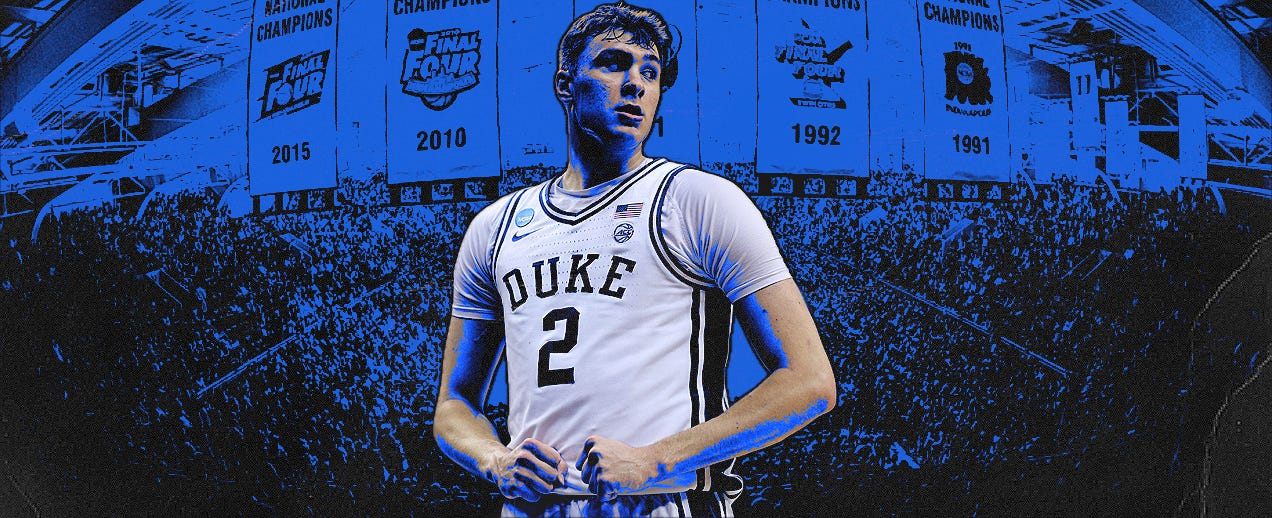
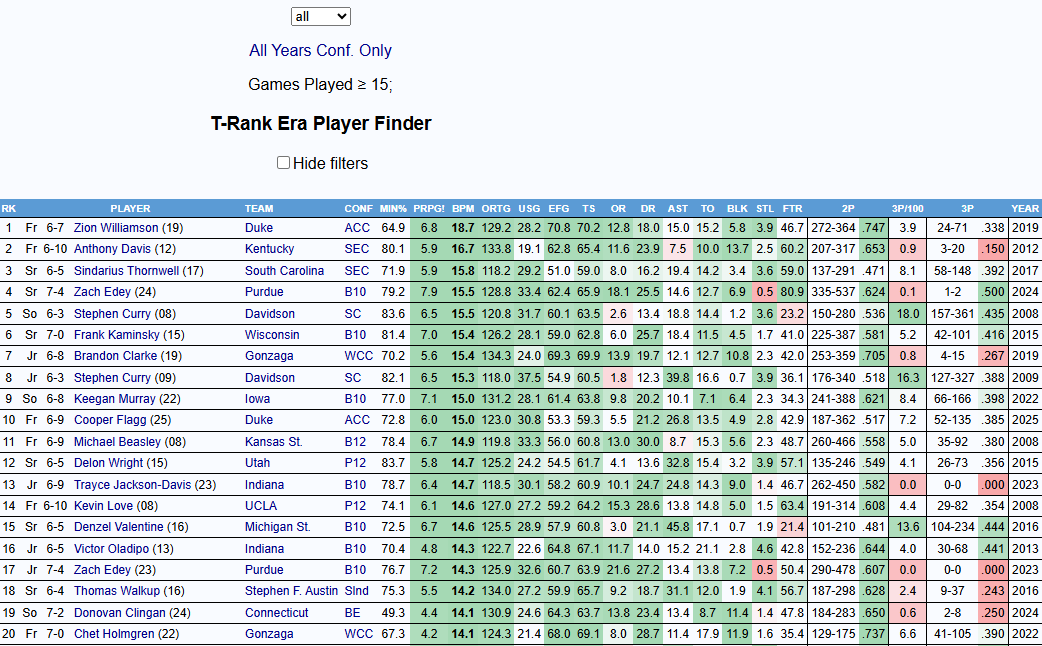

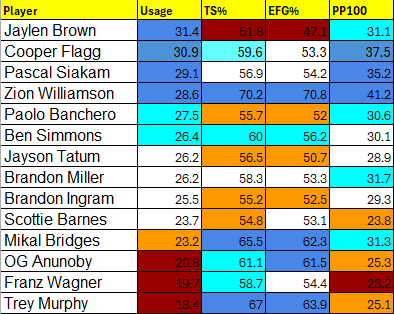
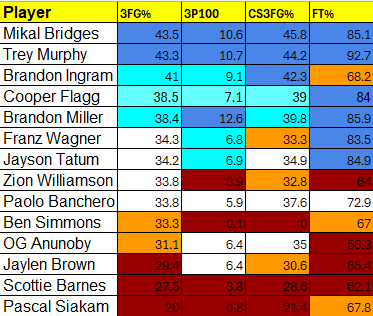
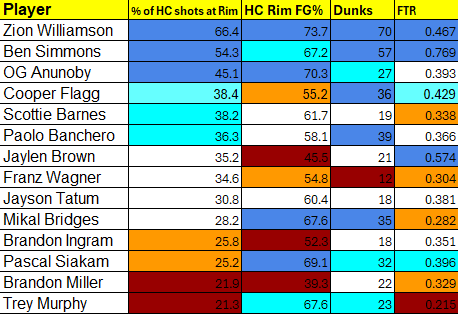
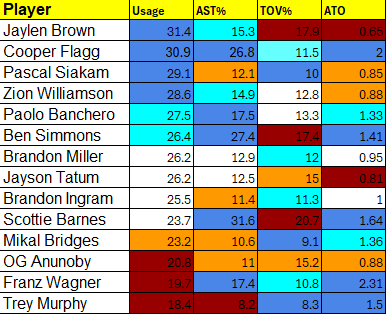
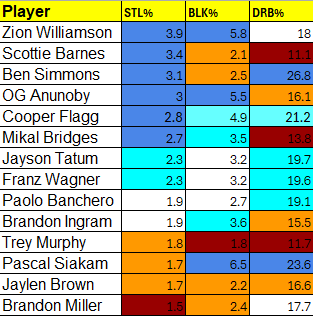
This was an awesome read.